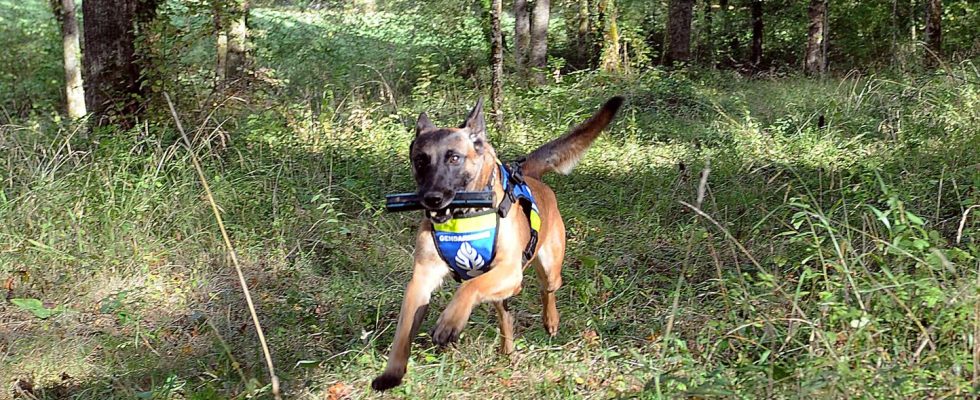A start of the trail in the village, then nothing more. Dogs specialized in searching for corpses come up empty. Four days after the discovery by a hiker of the skull of little Emile, missing since July 8 in Haut-Vernet, a village in Haute-Provence, the questions remain just as numerous and some are becoming more vivid.
And among them, this: is it possible that the dogs specializing in the search for humans or human remains missed little Emile or his corpse?
At a press conference this Tuesday, prosecutor Jean-Luc Blachon put forward the hypothesis that the olfactory faculties of the dogs could have been altered by the high heat and confirmed that the corpse search dogs had not precisely covered the area where The child’s skull and clothes were found, located a little over a kilometer as the crow flies from the family home. The fact remains that little Emile was in Haut-Vernet on July 8 and it is difficult to understand why the dogs did not manage to follow a trail.
Relief, heat and swirling wind
“We must already differentiate between track and search work,” introduces squadron leader Courton of the National Police Dog Training Center (CNICG) in Gramat, in the Lot. The tracking dog will look for a starting point for a scent and follow its route. We differentiate between warm slopes, on which the Malinois work, and cold slopes, which can last up to 5-6 days, for which we rather use Saint-Huberts. The search work, carried out mainly with Malinois, consists of searching for a source of odor, whether explosives, drugs or human remains. » Odors that dogs are able to detect up to 300 meters away, depending on conditions.
But in this work, several factors can complicate the dogs’ task: “There is already the wind, which can be a false friend. Then the relief, which can lead to an accumulation of odors in the hollows,” continues the squadron leader. “The uneven terrain causes odors to swirl,” adds Chief Warrant Officer Rodrigues. Also, we must keep in mind that odorous molecules are primarily volatile molecules and that heat and dry weather accelerate their dispersion. »
To make matters worse, “heat conditions alter molecules, unlike cold which preserves them. Following a trail in hot weather is always more complicated.” And it was hot, very hot, at the beginning of August in Haut-Vernet, with temperatures reaching 30°C in the shade.
In addition to an alteration and dispersion of odors, the heat also has consequences on the organisms of canines, with “a drying out of the olfactory cells,” explains Chief Warrant Officer Rodrigues, who nevertheless takes care to keep them well hydrated. . But you will have understood, Haut-Vernet, a mountain village with rugged terrain, exposed to wind and heat, presents “an unfavorable terrain configuration”, to use the words of the master instructors.
Children’s smells ‘leave fewer clues’
Can these elements be enough to explain the failure of the dogs in the Emile Soleil affair? If our interlocutors from the CNICG do not comment on this, they specify that “there is never certainty of result when working with living things. But when we are in an area with the Malinois and there is something, we have every chance of finding it. But we know that cadaver search dogs were not used in the discovery area.”
Presented in this way, the failure of the dogs to find Emile’s corpse is understandable. But what raises questions is now something known since the beginning of the case: a search dog had marked and followed the child’s trail from the grandparents’ house to the wash house, located about fifty meters away. , where it stopped abruptly.
“It is impossible for a human being not to leave an odor,” explains Barbara Ferry, specialist in human odors at the Lyon neuroscience research center. If the track stops, it is because the individual from whom the odor emanates has been moved or is no longer in contact with the ground. For example when being carried or getting into a vehicle. » The researcher also specifies that the “composition of children’s odors is less complex, less rich and therefore leaves fewer clues than that of adults”, although dogs are quite capable of following them. But for now, it is still the mystery that pursues the investigators.

